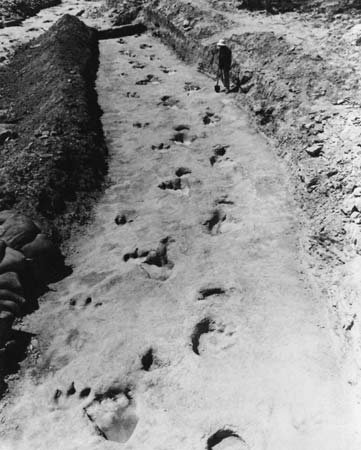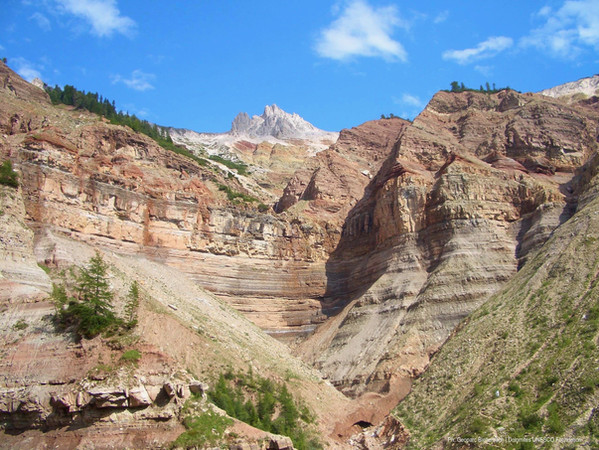Life after the greatest mass extinction from Earth's history: the Triassic recovery
- GeologX

- Mar 30, 2019
- 3 min read
Updated: Jun 2, 2020

Photo: Triassic Agatized Ammonite Cluster - Indonesia (www.fossilera.com)
About 252 million years ago, the most catastrophic event from Earth's history led to disappearance of over 95 % of marine and 70% of terrestrial species: the end Permian or Permian-Triassic extinction. Researchers state a sum/cumulative of factors that caused it: temperature crisis, alteration of Carbon cycle, a violent volcanic eruption, population explosion of methane-producing microbes and others. The consequences of this event rank it as the first in severity of the five major extinction episodes that span geologic time (even more severe than the Cetaceous-Tertiary extinction when dinosaurs disappeared).
Therefore, the start of the Triassic period (and the Mesozoic era) was a desolate time in Earth's history. But it was also a time of tremendous change and rejuvenation. Life that survived the so-called Great Dying repopulated the planet, diversified into freshly exposed ecological niches, and gave rise to new creatures, including rodent-size mammals and the first dinosaurs.
The slowly recovery began with the dominance of microbial carbonates (Webb, 1996) due to a 'reef gap' that lasted more than 5 million years during Early Triassic times (Payne et al., 2006). The reef communities re-diversified during Middle Triassic (Flugel, 2010). One of the few early Middle Triassic reef from the Tethys Ocean is the Tubiphytes build up from Mahmudia, North Dobrogea, Romania, composed of microbial boundstones (Popa et al., 2014).
During this time, the intense hothouse climate that caused the extinction persisted and the equator to pole temperature gradient was very low (Preto et al. 2010). The dry climate that generally dominated the earliest Triassic was interrupted later by a few moister phases, such as the one during the Middle Anisian (Stefani et al. 2010; Preto et al. 2010), revealing the unstable and pulsatory character of the environmental conditions.
Later, about 237 million years ago, in Late Triassic times, the first dinosaurs and mammals appeared into scene: plateosaurs and other prosauropods, ancestors of ornithopods and theropods, better evolved in Jurassic and Cretaceous.
''Giant reptiles such as the dolphin-shaped ichthyosaurs and the long-necked and paddle-finned plesiosaurs preyed on fish and ancient squid. The bottom rung of the food chain was filled with microscopic plants called phytoplankton; two of the major groups still in the oceans today first appeared. Frogs, salamanders, crocodiles, turtles, and snakes slunk and slithered on and off the Triassic coast, lakes, and rivers. Pterosaurs, a group of flying reptiles, took to the air. On firm ground, moss, liverwort, and ferns carpeted forests of conifers, ginkgoes, and palm-like cycads. Spiders, scorpions, millipedes, and centipedes thrived. Grasshoppers appeared.
One of the earliest true mammals was the three-foot-long (one-meter-long) Eozostrodon. The shrewlike creature laid eggs but fed its young mother's milk. Among the first dinosaurs was the two-footed carnivore Coelophysis, which grew up to 9 feet (2.7 meters) tall, weighed up to a hundred pounds (45 kilograms), and probably fed on small reptiles and amphibians. It showed up about 225 million years ago. A few million years later came the 27.5-foot-long (8-meter-long) herbivore called Plateosaurus.
The Triassic closed in the same way it began. Something—perhaps a volcanic belch or an asteroid collision—caused another mass extinction. Dinosaurs, however, survived and went on to dominate the Jurassic'' (National Geographic).
Photos (from top to bottom/left-right): 1-Plateosaurus sp.; 2-Early Triassic paleogeographic map (www.reddit.com); 3-Caucasites inflatus Shevyrev, lower Middle Anisian ammonite in Mahmudia quarry, Romania; 4-Middle Triassic Caerace Formation, outcropping in Mahmudia quarry, Romania; 5-Trackways of Theropod dinosaur, Connecticut Valley (www.georgialifetraces.com); 7- Spectacular Triassic outcrop in Unesco Dolomites Geoparc, Italy (www.dreamstime.com).


















Comments